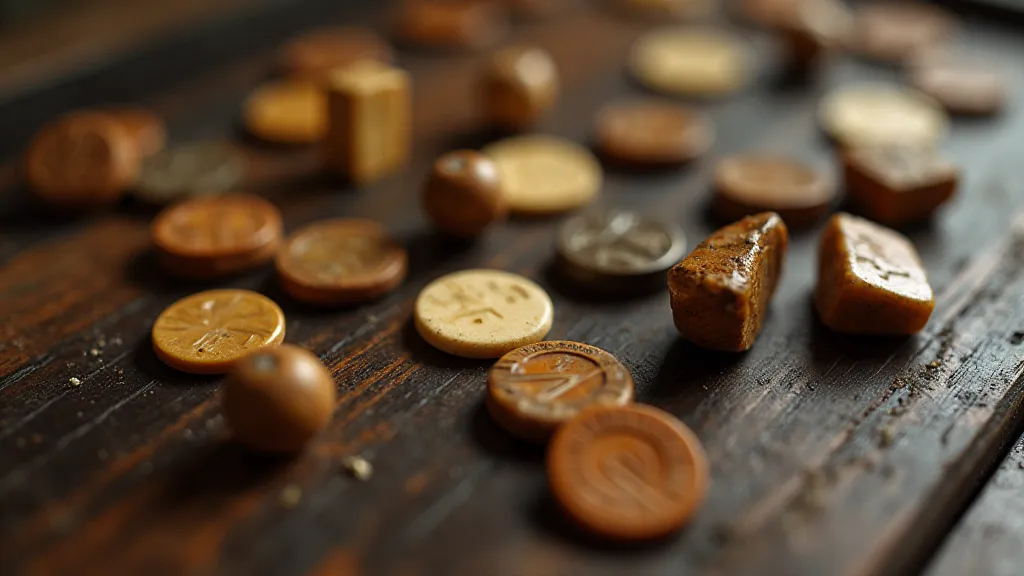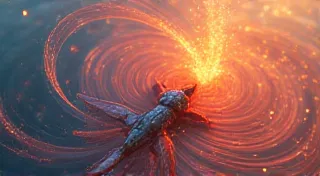The Alchemist's Crucible: Transmuting Nostalgia into Modern Game Design
There’s a peculiar magic held within forgotten board games. Not the stage magic of illusion, but a quieter, deeper enchantment – the residue of creativity, ingenuity, and a bygone era’s understanding of play. Like an antique accordion, with its intricate bellows and delicate reeds, these games whisper stories of their makers and players, offering a richness that often gets overlooked in the relentless churn of modern tabletop trends. This isn't just about dusty boxes and faded artwork; it's about understanding the core principles of game design distilled through a different lens – one shaped by limited technology and a different cultural landscape. They’re alchemical crucibles, waiting to transmute nostalgic memories into fresh inspiration for today’s game developers.
I remember my grandfather, a quiet man who rarely spoke of his childhood, would occasionally pull out a game called “Fortunes of the Cards” from a cedar chest. It wasn't a flashy, mass-produced title. It was a small, unassuming box, the artwork rendered in muted browns and golds, depicting a vaguely Victorian scene of fortune-telling. The components were simple: a deck of cards, a small cloth bag, and a rulebook printed on thin, yellowed paper. It wasn’t strategically complex; it relied on a blend of simple card draws and player interpretation. Yet, the act of playing it with him – the gentle rustling of the cards, the soft light catching the aged paper – evoked a profound sense of connection, a glimpse into his past. It felt… real. More real, somehow, than many of the slick, heavily produced games I’m accustomed to today. That feeling of authenticity, of handcrafted joy, is something modern game design can learn from.

The Clockwork Heart of Nostalgia: More Than Just Mechanics
Modern game design often focuses on intricate systems, but understanding *why* older games resonated so deeply requires exploring the emotional resonance they fostered. That feeling of connection wasn't just about the mechanics; it was about the sense of history, the inherited joy, and the shared experience across generations. It’s a complex interplay—the game itself a conduit for memories and relationships that extend far beyond the rules printed on the page. The rules themselves often served to *limit* the universe, to provide a frame for the shared storytelling, and to ultimately enhance the experience. To grasp the true essence of these older titles, it's crucial to consider The Clockwork Heart of Nostalgia and delve deeper into the emotional and relational aspects that contribute to their enduring appeal.
The Craftsmanship of Play
Modern game production is largely driven by economies of scale. Millions of copies are needed to recoup development costs, leading to a prioritization of efficiency over artistry. But the forgotten board games, often produced in smaller runs, frequently exhibit a level of craftsmanship that’s simply absent today. Consider the weight of the cardboard, the quality of the printing, the care taken in the creation of the components. Often, the pieces themselves were carved, molded, or otherwise handcrafted, giving them a unique tactile quality. Many featured custom die faces, intricately designed tokens, and rules implemented with surprising elegance. While not always complex, they exuded a sense of tangible value. This commitment to quality wasn't a marketing strategy; it was a reflection of the maker's pride and respect for the player.
The limitations of the past also fostered innovation. Without digital rendering or complex manufacturing processes, designers were forced to be resourceful. They relied on clever mechanics, imaginative storytelling, and a deep understanding of player psychology to create engaging experiences. "The Game of the Lost Continent" (c. 1910), for example, featured a remarkably sophisticated tile-laying system, years before similar mechanics became commonplace in modern games. The rules were simple, but the emergent gameplay, as players strategically placed terrain tiles to control resources and navigate the wilderness, was surprisingly compelling. The appeal wasn't about complexity; it was about shared discovery and a tactile connection to the game world.
Lessons from Limitation
Modern game developers often chase complexity, striving to create intricate systems and deep strategic layers. While there’s certainly a place for this, the forgotten board games remind us of the power of simplicity. Sometimes, less is more. The best forgotten games aren’t those with the most rules, but those with the most elegant, intuitive mechanics. They understood that engagement wasn't solely about challenge; it was about fostering a sense of wonder and shared experience. They weren’t afraid to leave room for interpretation, allowing players to shape the narrative and create their own moments of discovery. Look at "Tiddlywinks," a game often dismissed as trivial, yet possessing an unexpected depth of skill and a surprising social element. The rules are minimal, yet the variations in gameplay are endless, fuelled by player ingenuity and a playful spirit.
Moreover, the physical limitations of these games – the lack of elaborate artwork or sophisticated production techniques – often led to a greater emphasis on gameplay. The focus shifted from aesthetics to functionality. This is a valuable lesson for modern developers who might be tempted to prioritize visuals over mechanics. A beautiful game is meaningless if it’s not fun to play. The very act of establishing the "rules of the universe" – what can happen, what is allowed, what is forbidden – plays a crucial role in shaping the experience. Examining how these older games defined and limited their worlds can provide invaluable insights. Indeed, The Ephemeral Kingdom beautifully explores the power of rulebooks to define, shape, and ultimately constrain the realms of imagination.

Reflections of Society: More Than Just Play
Beyond the mechanics and the craftsmanship, forgotten board games also provide a fascinating window into the cultures that created them. The themes, the artwork, and even the very act of playing together reveal societal values, anxieties, and aspirations. A game's apparent simplicity can often mask deeper cultural narratives. Consider how themes of fortune-telling, exploration, or resource management reflected the prevailing attitudes of the time. They aren’t just entertainment; they are artifacts of their era, offering glimpses into the social and political landscape. The narratives embedded within these games often mirror the societal concerns and hopes of their time, making them powerful tools for understanding the past. These games offer an “Obsidian Mirror” reflecting the values, concerns, and aspirations of the era in which they were created, revealing surprisingly revealing insights into the social and cultural climate.
Restoration and Collecting: A Portal to the Past
Collecting forgotten board games is more than just acquiring objects; it's about preserving history. Many of these games are fragile, their components worn and faded. Restoration isn’t about making them perfect; it’s about stabilizing them, ensuring their survival for future generations. A simple measure might include carefully cleaning components, reinforcing fragile cardboard, or replacing missing pieces with accurate reproductions – a delicate balancing act between preservation and authenticity. Many hobbyists dedicate years to researching and replicating vintage game components, contributing to a growing appreciation for these forgotten treasures. The process itself can be incredibly rewarding, providing a deeper understanding of the game's history and the craft that went into its creation.
Even without undertaking full restoration, simply handling these games—feeling the texture of the cardboard, examining the artwork, reading the rules—connects us to the past. They offer a glimpse into a different era, a reminder that play can be both engaging and meaningful, even without the bells and whistles of modern technology. The condition of a vintage game can also hint at its journey - the care it's received, the hands it’s passed through, the stories it might hold.
Transmuting Nostalgia: Modern Inspirations
So, how can modern game developers draw inspiration from these forgotten gems? It’s not about simply copying their mechanics or aesthetics. It’s about understanding the underlying principles that made them successful—the emphasis on simplicity, the focus on player interaction, the appreciation for tangible quality. Consider incorporating elements of narrative interpretation, encouraging players to co-create the story. Embrace limitations – perhaps designing a game that utilizes only a single die or a deck of cards. Explore the tactile experience – using unique materials or creating components with a handcrafted feel. Most importantly, remember that play should be about connection, wonder, and shared discovery.

The forgotten board games aren’t relics of a bygone era. They’re a wellspring of inspiration, waiting to be tapped. By looking beyond the latest trends and embracing the wisdom of the past, modern game developers can create experiences that are both innovative and meaningful—transmuting the nostalgia of forgotten games into the joy of contemporary play.





